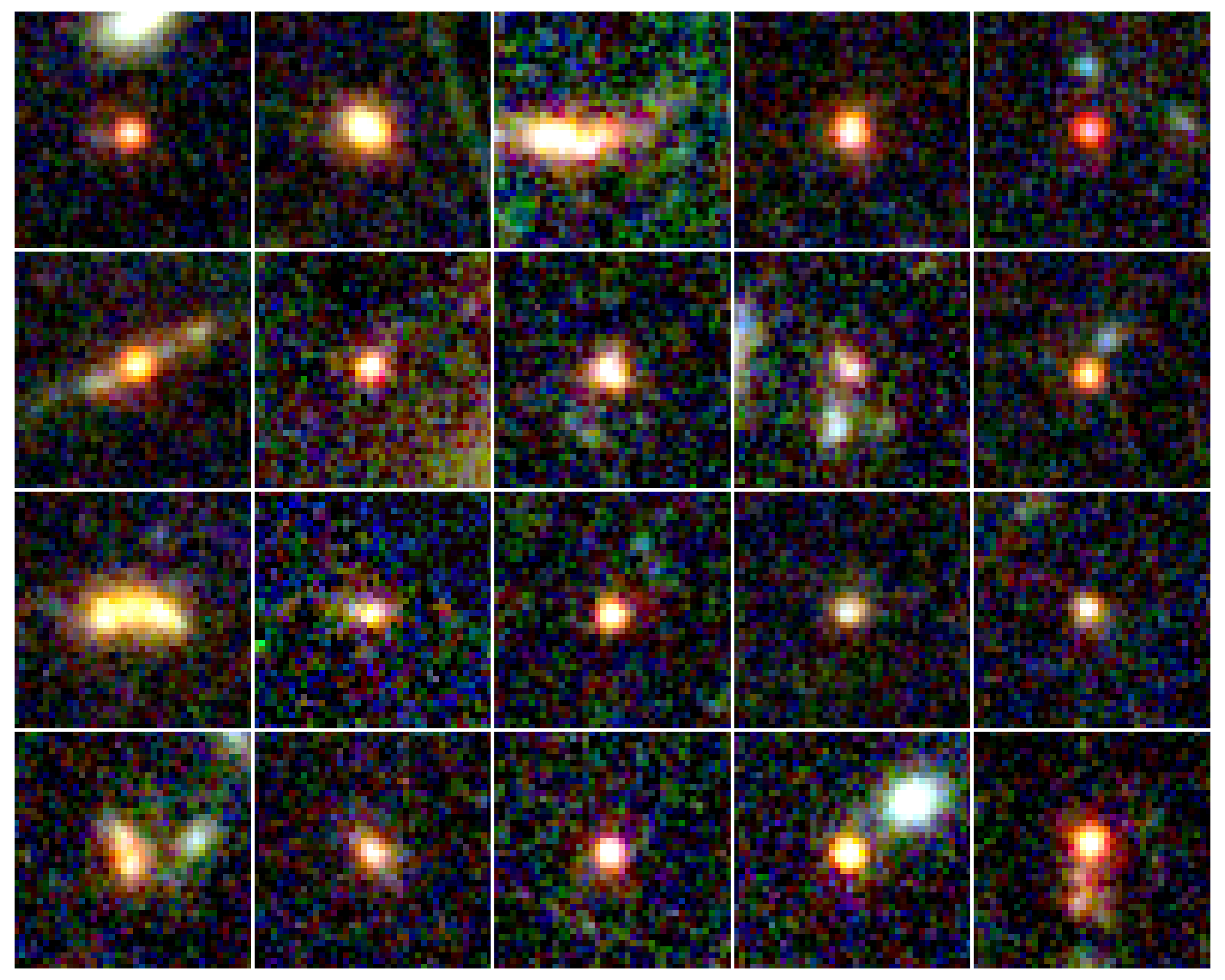DOUBLE-BREAK GALAXIES
ΛCDM Not Dead Yet: Massive High-z Balmer Break Galaxies Are Less Common Than Previously Reported
Desprez et al. 2024, MNRAS, 530, 2935
Early JWST observations that targeted so-called double-break sources (attributed to Lyman and Balmer breaks at z>7), reported a previously unknown population of very massive, evolved high-redshift galaxies. This surprising discovery led to a flurry of attempts to explain these objects' unexpected existence including invoking alternatives to the standard ΛCDM cosmological paradigm. To test these early results, we adopted the same double-break candidate galaxy selection criteria to search for such objects in the JWST images of the CAnadian NIRISS Unbiased Cluster Survey (CANUCS), and found a sample of 19 sources over five independent CANUCS fields that cover a total effective area of ~60 arcmin2 at z~8. However, (1) our SED fits do not yield exceptionally high stellar masses for our candidates, while (2) spectroscopy of five of the candidates shows that while all five are at high redshifts, their red colours are due to high-EW emission lines in star-forming galaxies rather than Balmer breaks in massive, evolved systems. Additionally, (3) field-to-field variance leads to differences of ~1.5 dex in the maximum stellar masses measured in the different fields, suggesting that the early single-field JWST observations may have suffered from cosmic variance and/or sample bias. Finally, (4) we show that the presence of even a single massive outlier can dominate conclusions from small samples such as those in early JWST observations. In conclusion, we find that the double-break sources in CANUCS are not sufficiently massive or numerous to warrant questioning the standard ΛCDM paradigm.
